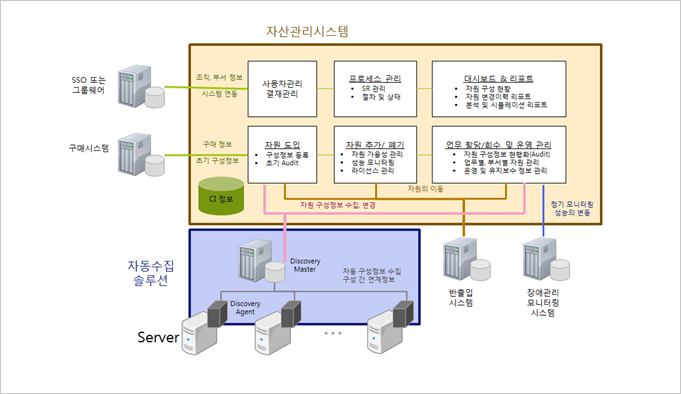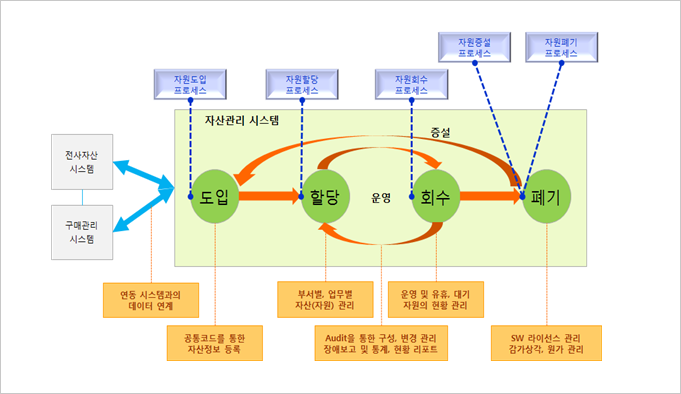HOME > Business > Development Project
Development Project
Our major business and development areas are as follows.
- IT Assets Management Systems
- Usage-based Management System / Metering and Billing System
- Cloud Service Management System
- Business Process Management System
- Other Operating System Related Data Dashboard and CI Code Management
ITAMS(IT Asset Management System)
This is a system that categorizes the details and characteristics of the spending of IT related assets for clear distinction and to produce statistical values to manage various IT assets efficiently. With this system, a company can manage the lifecycle of its entire IT assets to minimize management expenses and achieve their management goals efficiently, reduce redundant investment by checking the status of assets and equipment operation, and enable smooth operation coordination and effective data sharing between related departments.


Usage-based Management System / Metering and Billing System
“Usage-based (utility computing)” means that the IT company provides IT functions such as computing power, storage, application, networking, and resources in the form of services, and customers shoulder the expenses for as many services as they use. As the expenses are determined by the amount of usage, companies can reduce expenses and use resources more efficiently.
A billing system is a computerized system designed to automatically handle billing related operations such as calculating charges for subscribers of the company’s services, requesting for, and collecting payments. Billing systems are composed of comprehensive business support features, such as flexibility of size, flexible inter-operation with other systems, integration potential, customer management, subscription management, usage volume management, billing management, sales and receipt management, outstanding bond management, settlement management, sales status management, code management, and operation management.
Metering collects and categorizes a range of information, including server usage, storage allocation/usage, and backup capacity, and provides it to the billing system.
Cloud Computing Service Management System
Cloud Service is a computing service where the user can borrow computing resources, such as hardware and software, which are available in an intangible form like the cloud, to the extent they need, and pay the applied charges. It refers to the technology that provides the computing resources existing in different physical locations by integrating them through virtualization. Cloud computing, the innovative computing technology which singlehandedly provides all types of IT related services, such as data storage and handling, network, and content use, from a server over the internet, referred to as the “Cloud”, is also defined as ‘Customized outsourcing service of IT resources using the internet.‘
Business Process Management System
This is a change management and system realization technique capable of visualizing the work process inside and outside the company and operating and controlling people and systems related with the execution of work in order to manage and optimize the entire work process more efficiently. It continuously grows, changes, and advances, and it operates on the premise that it understands each process flow and directly develops the business process that can be extended through the business process management system, which is the technical solution.
Other Operating System Related Data Dashboard and CI Code Management
CI Code (Common Identification Code) Management refers to the system that enables the accurate processing, statistically analysis, and transmission/reception of the code systems individually used by various systems during system integration using standardized data by directly creating, modifying, distributing, and managing them in the central system.
Dashboard uses tables, graphs, and charts to effectively show the data required by the user using related technologies, such as processing in real time, processing of data within a preset time period, and processing of large amounts of data.







